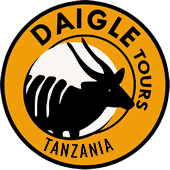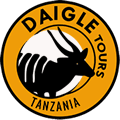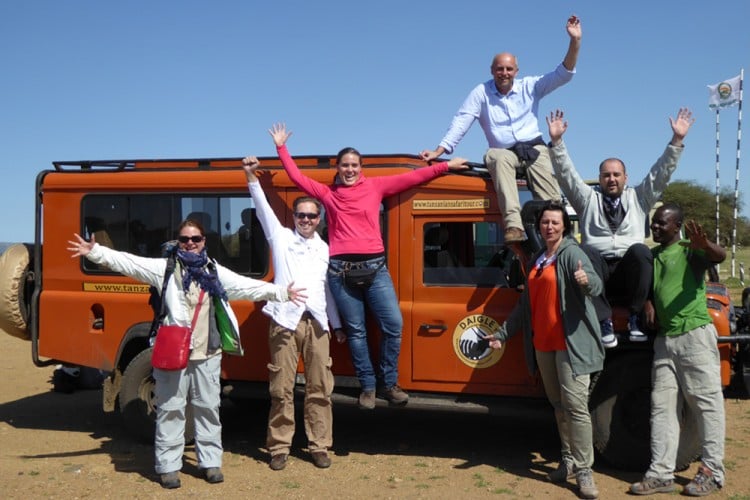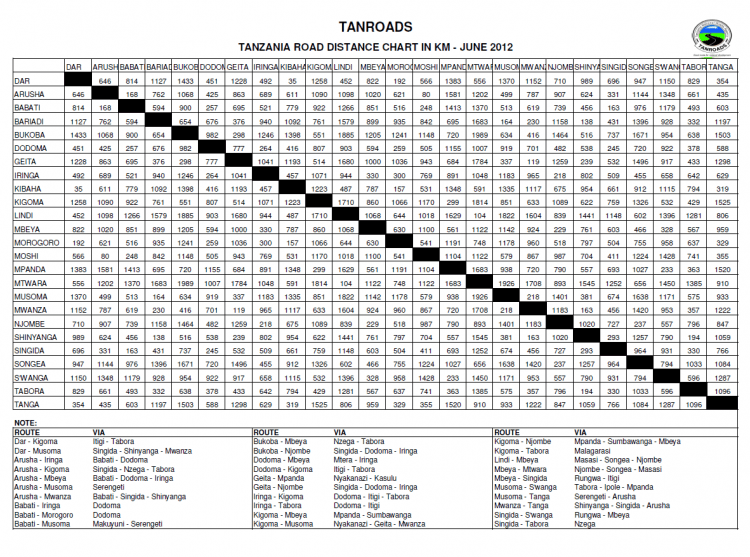Useful information for your trip to Tanzania
Mobile phones, Internet services, landlines, fax, post and telegrams are available in urban centres and popular tourist locations
International direct dialing is available at most hotels in urban areas. In rural areas international calls are made through the operator. It is not recommended to call overseas from Tanzania as it’s very pricey on local landlines.
The country code for Tanzania is 255
Satellite Communications System
Daigle Tours can offer the above high speed internet satellite system, to those requiring it and price subject to internet bundle required, on request.
International flights land at Dar es Salaam, Zanzibar and Kilimanjaro. A few European carriers fly direct to Dar or Kili, while Gulf Air and Emirates fly to Dar using middle-east connections. Other airlines that fly to Tanzania include Ethiopian Airlines, Kenya Airways, KLM, Oman Air, South African Airways, Turkish Airlines and Swissair. Check with your IATA Travel Agent for the best deals or use one of the internet airfare quote websites for the best prices.
Dar es Salaam International Airport
Located 15 km southwest of Dar es Salaam and takes approximately 25 minutes to reach by car from downtown. Airport facilities include a duty-free shop, car hire, post office, banking and bureau de change, and a bar and restaurant
Kilimanjaro International Airport
Lies 40 km from Arusha or Moshi and takes approximately one hour to reach by car. Facilities include curio shops, a post office, and a bar and restaurant.
Zanzibar International Airport
Located approximately 7 km from the centre of Stone Town it takes approximately 15 minutes to reach by car. Facilities include a restaurant, bureau de change and curio shops.
A popular route for those heading for the northern parks is to fly into Nairobi and cross to Arusha using an affordable four-hour shuttle bus service, which operates twice a day. This is a cheaper alternative often than flying into Kilimanjaro airport. You must remember that if you are terminating in Nairobi you will have to get back there to fly home, so allow extra time after your safari to catch the shuttle back from Arusha.
If you choose to visit the Southern Circuit National Parks like Selous, then we recommend you fly into Dar es Salaam. From here you can also easily extend after your safari to Zanzibar, Pemba or Mafia Islands.
You can catch a ferry across Lake Tanganyika to Kigoma from Bujumbura in Burundi, Congo (DRC) and Mpulunga in Zambia.
A train service runs between Kapiri Mposhi in Zambia and Dar es Salaam, and there are also good road links to Kenya and Zambia.
Tanzania has a tropical climate and different bacteria, flora, and fauna than most visitors are accustomed to, so it is advisable to take a few health precautions when travelling to make sure that your trip goes as comfortably and smoothly as possible. Malaria is usually top on the list of visitor worries, and prevention goes a long way towards keeping you protected. Make sure to visit your doctor to get a prescription for the anti-malarial drugs that best suit you. Tanzania (including Zanzibar) requires you to carry a certificate of yellow-fever vaccination only if you are arriving from an infected area (which includes Kenya). However, it is a requirement in some neighbouring countries (eg Rwanda, Burundi). Yellow fever is spread by infected mosquitoes. Other vaccinations should be considered. For more information, contact your doctor well in advance of your visit.
Here is a brief outline of the health risks and precautions you should take, when travelling in Tanzania.
- Bilharzia – Some fresh water lakes and rivers carry the risk of bilharzia. Our advice is to not swim in such areas.
- Cholera – Though proof of vaccination is not required, cholera is a risk throughout the country and precautions are necessary. Do not eat vegetables or fruits that have not been washed in mineral water is the best recommendation we can make. Avoid eating fruits that have been peeled for you!
- HIV-AIDS – HIV-AIDS is prevalent in Tanzania, so protection is a necessity.
- Hospitals and Chemists – Modern hospitals and chemists are available in Dar es Salaam, Arusha and other major urban centres.
- Malaria – Malaria is common throughout Tanzania. We strongly advise you to take anti-malaria medication, recommended by your Doctor, starting two weeks before travel.
- Other vaccinations – We recommend that you have vaccinations, recommended by your
- Doctor, against hepatitis A, polio and typhoid.
Space in safari vehicles and light aircraft is limited and we ask that you pay particular attention to the guidelines below.
We suggest you restrict your luggage to:
- 1 case – hard cases are acceptable but soft bags preferable. A barrel-style bag is best
- 1 small rucksack containing money, travel documents and camera equipment. This will be inside the vehicle with you at all times
- 1 small fold-up bag (overnight bag) to be used on itineraries that include short excursions
- 1 waist pouch or money belt
We recommend that you use old or inexpensive luggage. You may use a small/medium-sized rucksack, provided that it has no frame (this causes problems for packing in vehicles and bush planes). It is important to note that flying internally between cities your allowance is normally 20kg, but on bush planes (travelling between the parks) it is restricted to 15kg.
IMPORTANT: Please take your medication and toiletries with you on board the plane (ensure that these items conform to international air-travel regulations).
Luggage Storage
Depending on the size of your party it may be necessary to leave some luggage (not required) in storage, whilst you are on safari. Daigle Tours can offer this service but at client risk. In the case of a small group we are prepared to allow for more luggage as you are taking the whole vehicle and therefore not inconveniencing other clients.
Bill denominations are: 500, 1,000, 5,000 and 10,000; coin denominations are:one, five, 10, 20, 50, 100 d 200 and 500.
In theory foreigners must pay for accommodation, park fees, organised tours, upmarket hotels and the Zanzibar ferries in US dollars, though usually shillings are accepted at the going rate. You cannot pay for Zanzibar ferry tickets as a foreigner in Tanzanian Shillings ONLY USD.
Note: prices can be high in Tanzania.
ATMs – These are widespread in major towns. However, they can often be out of service, so always carry some back-up funds. Visa or Mastercard is by far the best card for cash withdrawals. You can withdraw up to Tsh300,000-400,000 per transaction but check beforehand with your bank. Also don’t forget to inform your bank you will be travelling and what countries.
Cash – The best currency to bring is US dollars. US$50 and US$100 bills get better rates of exchange than smaller denominations (and other currencies). However, it is useful to have some small bills for tipping. Old-style US dollar bills (2006 and prior) are not accepted anywhere. Euros are also readily accepted, while other major currencies can be exchanged in urban centres only.
Exchanging Money – You can change cash with a minimum of hassle at banks or foreign exchange (Forex) bureaus in major towns and cities; rates and commissions vary, so shop around. Forex bureaus are usually quicker and offer higher rates. The best banks for foreign exchange are Exim or NBC.
Note: banks and Forex bureaus close from noon on Saturday until Monday morning.
In order to reconvert Tanzanian shillings, it’s a good idea to save some of your exchange receipts, although they are seldom checked. The easiest place to reconvert currency is at the airport.
Taxes – VAT is 18% (subject to change) and is usually included in quoted prices.
Travellers Cheques – We do not recommend travellers cheques.
The earliest inhabitants can be traced back 3.6 million years and their footprints can be seen at the Olduvai Gorge in Northern Tanzania.
The coastal region was a thriving trading area with international connections before the colonization by Germany in the 19th century. The mainland, then known as Tanganyika, came under British rule after the First World War in 1918. This lasted until a liberation movement lead by Julius Nyerere came into power uniting Tanganyika and Zanzibar to form Tanzania in 1963. His leadership also was the development of the Swahili language as the main language in Tanzania and the uniting of all tribes under one common language. In 1985 Tanzania relinquished its socialist roots and started a free market economy. The peace in the country was disrupted in 1978 when Tanzania sent its army to overthrow the dictator Idi Amin in Uganda after he tried to invade the Kigoma region of the country.
The recent discovery of Oil & Gas has created a mini boom in the South of the country and will help lessen the countries dependence on Western aid.
The best known of Tanzania’s tribes is the red-robed Maasai. There are, however, more than 100 other tribal groups – each with their own rich traditions and customs. Music, song and dance plays a vital role in traditional culture. No one tribe comprises more than 10% of the population, and this perhaps contributes to the tranquility the country has experienced.
Tanzania has two official languages: Swahili and English. Swahili developed from the interaction of Arabs (who have a strong influence in Zanzibar) and Bantu Africans. The language is considered the lingua franca of Tanzania, and it is also heard across eastern and central Africa.
FIRST AID and MEDICAL KIT PACKING LIST
We suggest that you bring the following but please also seek the advice of your Doctor:
- Anti-diarrheal Medication: travellers diarrhea is very commonplace and you can usually leave it to nature to sort itself out. But if you’re about to embark on a long car, bus or train ride, it’s handy to have some medicine available.
- Painkillers and anti-inflammatories: Advil, aspirin, and Tylenol.
- Antihistamines: for allergic reactions. Benadryl works well and if you have severe allergies (to peanuts or bee-stings for example) you should always take at least 2 epi-pens with you.
- Antibacterial ointment/powder: Cuts and sores can get infected quite quickly in the tropics. Bactroban is a prescription cream that is effective and we recommend.
- Anti-malaria pills: Check with your local travel clinic which malarial prophylactics will work best for the region you are planning to travel in. There’s also a self-diagnostic kit that you can bring along to check if you have malaria by pricking your finger.
- Hydrocortisone Cream: For allergic skin reactions and itchy bug bites.
Bandages, band aids, gauze and gauze rolls with adhesive tape
Scissors, safety pins and tweezers: Some Swiss army knives have scissors and tweezers that will do fine, just make sure don’t pack it in your hand luggage. - Thermometer
- Insect Repellent with DEET: Whether you’re a fan of DEET or not, it’s the only stuff that’ll work in Africa and it’s better than getting malaria or dengue fever.
- Sun Block
- Oral Rehydration Salts: If you pack these and have any left, give them to someone who may be able to use these locally before you go. Dehydration kills many young children in Africa and a simple rehydration kit can save a life.
- Iodine Tablets: Bottled water isn’t always available in more remote places and you may not be able to boil your own easily. These tablets won’t taste so good (mix with orange squash to make it more palatable) but the water will be safe.
- Syringes and sterile needles: Since HIV?AIDS is spread through dirty needles, it’s good idea to bring your own along since some rural hospitals are forced to re-use theirs.
- Antiseptic Hand Wipes
- Other medicines you regularly use
Security
Tanzania is a safe country to travel in. Tanzanians are warm-hearted and generous people and are eager to help visitors get the most out of their stay. Tanzania is a politically stable, multi-democratic country. As in all countries, a little common sense goes a long way and reasonable precautions should still be taken, such as locking valuables in the hotel or Safari Lodge safe and not walking alone at night.
Daigle Tours take your security and personal wellbeing, whilst in Tanzania, very seriously. We will not allow you, whilst in our “care”, to be in any place that would compromise your security.
When travelling in the National Parks our guides are trained to put your security and protection from wildlife first. They will not allow you to leave the vehicle without proper supervision in game areas and will advise you on camp security when you are on a fly camping safari. Daily briefings ensure you are aware of the dangers from wildlife and correct conduct in culturally sensitive areas.
Do not take photographs of border posts or military/police posts, government buildings and people (unless they have agreed). Before taking a photograph of a local it is respectful to ask permission first. Often, payment is expected and demanded!
Cameras – For photography of birds and animals we recommend using a 300mm telephoto lens. Film and batteries are only available in larger cities and lodge-style accommodation, and tend to be expensive.
Video Cameras – The power supply is 220-240 volts. Daigle Tours vehicles have charging facilities, but not all vehicles you will travel in, so we suggest that you recharge your cameras in the evenings and carry a spare battery during the day. Your Guide be able to advise when best times for charging whilst on safari.
Binoculars – When visiting wildlife areas it is essential to have a pair of binoculars, in order to benefit fully from the safari. We recommend good a pair 10 x 40 binoculars. No one should even contemplate going on safari without a good pair of at least 8 x 30 magnification binoculars. “Opera” binocs just don’t cut it out there in the bush.
Star gazing – There is nothing better than to watch the sun go down from the top of a rocky kopje and to stay and watch the stars and planets appear. Many an enjoyable evening has been spent discussing the heavens and the details of both astronomy and astrology. We recommend if you enjoy the stars to travel with a Celestron Skyscout, which identifies and informs you about any stars, planets, and celestial objects. In the same pack as the Skyscout, carry a Green Laser pointer, which is perfect for pointing out specific stars to your fellow travellers. Also the clean air and conditions in Tanzania, in the remote areas, provide exceptional clear viewing of the stars.
Maps and Field Guides – We recommend:
- Birds of East Africa (Terry Stevenson and John Fanshawe)
- Field Guide to the Larger Mammals of Africa (Chris and Tilde Stuart)
All visitors require a visa except citizens of some African and commonwealth countries. It is advisable to obtain visa’s in advance from Tanzania Embassies and High Commissions as some airlines may require it before allowing you to board. But you can also be issued with a visa on arrival at Dar es Salaam, Zanzibar and Kilimanjaro international airports and at the Namanga, Sirari, Horohoro, Tunduma and Taveta Tanzania border but please check the website links below also.
Nationals of countries exempt from visa requirements will be issued with free visitors pass at the same entry points. Those travelling to Zanzibar, visas are required even for a day’s visit. Visa requirements however vary from time to time and you are advised to check on prevailing status well ahead of travel.
Your passport must be valid for at least six months.
As a rule water in the more up market safari lodges and hotels it’s safe to clean your teeth however, if not sure ask or use mineral water.
Many hotels and lodges urge you to reuse towels rather than send to the laundry each day, this is something we also recommend you do to help conserve water.
Tanzania is a rewarding place to visit at any time of the year. It has a comfortable, tropical climate but, due to its vast size and location, just south of the Equator, regional variations occur.
Temperatures rarely fall below 20°C (68°F), except in the highlands, where it can drop to 10°C during the cold season (May-August). The hottest period is from December to February, when temperatures are high but not oppressive.
The southern, central and western parts of the country experience one rainy season from December to April).
When to go?
The long rains start end of March and run through to the end of May. Northern Tanzania sees most of its heavy rain during the short rains in November, which are normally dry by the start of December. Best time to visit is either June through to early November, or early December through to end March. The wildebeest migration is most active throughout the year. The coastal areas are best visited between August and end March. Southern Tanzania is best visited between June and October. December through to May remain wet and logistics complicated.
High Season (Jun–Sep)
Weather is cooler and dry.
Hotels in popular areas are full, with high-season prices.
Animal-spotting is easiest, as foliage is sparse and animals congregate around dwindling water sources.
Shoulder Season (Oct–Feb)
Weather is hot, especially December through to February.
From late October, the short rains (vuli) fall and the kusi (seasonal trade wind) blows.
High-season prices from mid-December to mid-January.
Low Season (Mar–May)
Heavy rains make secondary roads muddy and some areas inaccessible.
It seldom rains all day, every day. Landscapes are lush and green.
Some hotels close; others offer discounts.
Best times to visit
Northern Tanzania: July to March
Southern Tanzania: June to March
Zanzibar and the coast: June to March
Western Tanzania: May to March
See our blog post “The Best Time to visit Tanzania”
As many lodges and luxury mobile fly camps offer laundry service, you don’t need to bring a lot of clothes. For a ten-day safari, we recommend you pack two pairs of convertible hiking pants, three short sleeve T-shirts, two long-sleeved shirts, a fleece, bicycle arm warmers (for chilly mornings), three pairs of socks, four pairs of underwear, and a cashmere sweater and pair of baggy yoga pants or track suit pants for evening. In the wet season, also pack rain pants and a waterproof windbreaker that each fold into a small pouch.
Most people make the mistake of taking too many clothes. Take only comfortable, casual and semi-casual, ‘wash-and-wear’ clothes. Bright colours and whites are not suitable for game viewing. Please also avoid clothing resembling army uniform. The list below is purely a guideline, and will depend on the length of your safari as well as the month/season. Additional warmer clothing may be required from June-August:
➢ 1 towel
➢ 2 sunhats (many people have lost one while on safari)
➢ 4 pairs of knee-length shorts
➢ 2 pairs of smart/casual trousers
➢ 2 light cotton dresses/sarongs for the ladies
➢ Underwear and socks
➢ 7 shirts/t-shirts (any combination)
➢ 2 jerseys for the evenings (April-August)
➢ 1 tracksuit (April-August)
➢ 1 windbreaker/rain jacket (rainy seasons)
➢ 1 warm jacket (April-August, winter nights can be very cold)
➢ 1 pair of walking/running shoes (2 if possible as the security guards do like them)
➢ 2 pairs of sandals, thongs (flip flops), rafting or canoeing shoes
➢ 2 swimming costumes (due to timings it’s not always possible to dry)
➢ Sunglasses (very important)
➢ 1 torch and batteries
➢ Hair brush, nail brush
➢ Sunblock and after sun.
➢ Lip balm (with the dust, lips get dry very quickly)
➢ Hand cream (as above)
➢ Insect repellent (roll-on is best)
➢ Tissues or disposable moist tissues
➢ Washing powder, plug for sink (most properties won’t wash ladies’ smalls)
➢A waterproof bag. Not only to protect anything and everything from rain, but frankly, dust is an even bigger problem and anything waterproof will solve that too. Plastic bag (to pack wet/dirty clothing)
➢ Pen (for immigration formalities)
➢ Multi-purpose knife, e.g. Swiss Army knife (keep it in your main luggage when travelling on planes otherwise it could be confiscated)
IMPORTANT: Please dress appropriately when crossing borders (no bare feet, no bare chests, no bikini tops, and covered shoulders).
NOTE: If you wear contact lenses bring glasses as well because the dust can irritate your eyes.



